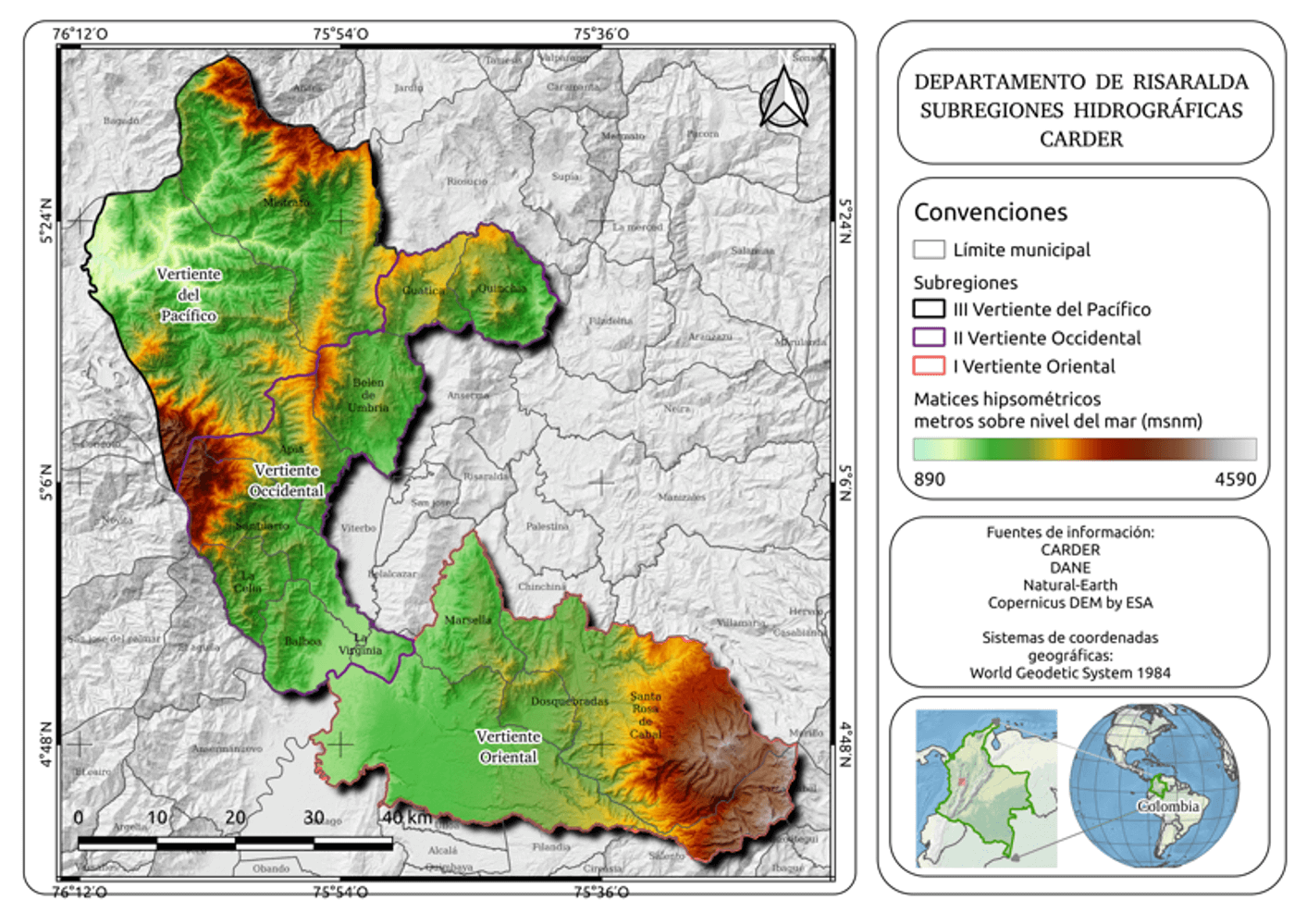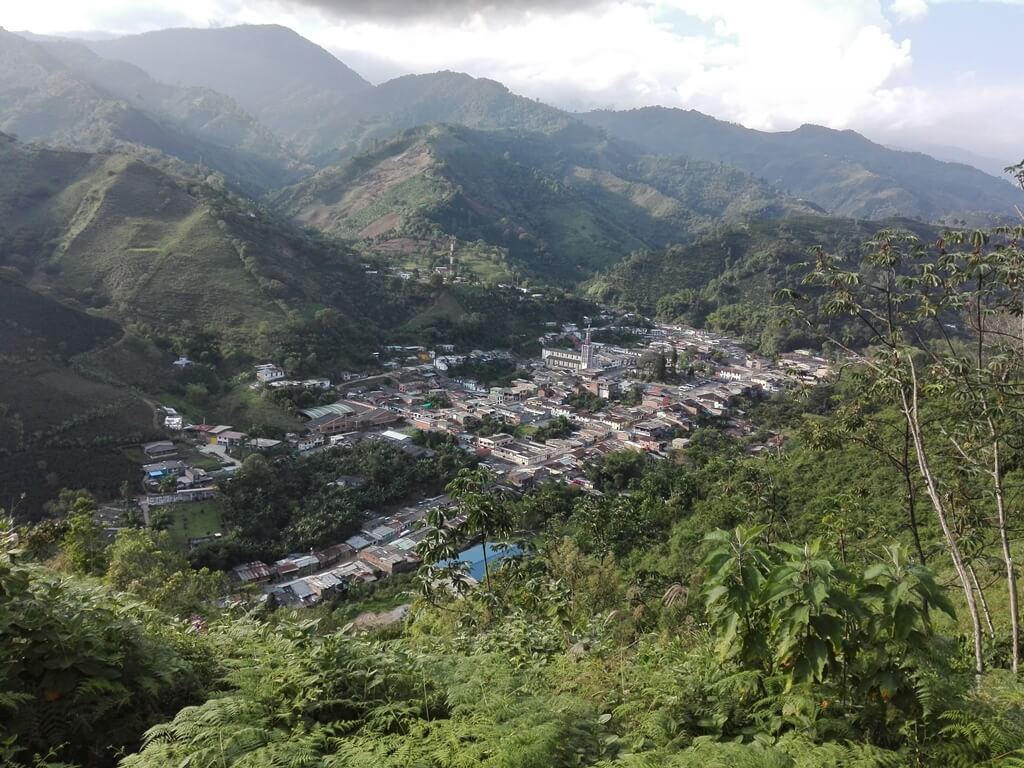LANDSCAPE PARTNERSHIP
LANDSCAPE
- Risaralda, Colombia
Stretching across Colombia’s Andean region, the Risaralda landscape contains part of the South American country’s coffee belt and the Tumbes-Chocó-Magdalena biodiversity hotspot. Ethnic and cultural diversity is a hallmark of the local population, which includes several indigenous groups, African descendants and those of mixed African and European descent.
The landscape comprises three subregions, each defined by unique biophysical, economic and socio-cultural characteristics. Subregion I encompasses larger cities, protected areas and the Otún river basin, where metal-working, textile and service industries are the main income generators. The Risaralda river basin is located in Subregion II and is home to the area’s prime agricultural zone, with coffee and livestock production as the primary livelihood sources. Pineapple, cacao, banana, sugarcane, avocado and citrus also contribute to the economy. Subregion III encompasses the Indigenous and afro-descendant territories, where large tropical rainforest reserves provide high value for ecosystem services.
For more than 25 years, the Risaralda Model Forest (BMR) Landscape Partnership has led a participatory landscape management model that has helped conserve 36% of the territory as a protected area. The current landscape partnership is a coalition of stakeholders representing the region’s environmental, social and economic forces. Collaborators include community-based groups, universities, civil society organizations and government institutions working to grow the stakeholder network, strengthen livelihoods, promote sustainable production systems and conserve the landscape’s biodiversity.
The region’s most significant challenges include land-use conflicts, constant deforestation, extreme climatic events and rural unemployment that feeds informal urban economies. Through collaborative governance, the Landscape Partnership has developed a strategic plan that integrates the BMR’s socio-environmental sustainability with landscape-level management. It has also joined 1000 Landscapes for 1 Billion People to share experiences, forge new alliances and collaborate with others to achieve more sustainable development.
The BMR’s partners strive to manifest their shared vision of a landscape recognized at national and international levels for its ecological integrity and cultural identity.

Landscape Snapshot
AREA
Part of the BMR is located in the Colombian coffee belt, a UNESCO World Heritage site. In addition, the Risaralda Model Forest hosts a unique ecosystem, the guadua bamboo forest (Guadua angustifolia Kunth), which represents a source of income for rural producers who use and grow it. Some harvesting operations have been certified by the Forest Stewardship Council (FSC).
The Landscape Partnership’s main challenges include widening the social stakeholder base and developing projects that strengthen sustainable livelihoods facing climate change, as well as promoting sustainable production systems and conserving biodiversity.
The region’s economy is based on trade, industry and agriculture. Agriculturally, the BMR is home to significant coffee and dairy and meat livestock production. The region is also home to the industrial production of food, beverages, textiles, paper and coal. In recent years, ecotourism has grown in economic importance through birdwatching and travel to explore the diversity of ecosystems.
coffee, banana, cane, cocoa, Hass avocado, pineapple and citrus.
Andean tundra, montane rainforest and tropical dry forest.
- Risaralda Model Forest
BMR’s management group includes six institutions and organizations that seek to collaborate with local basin councils, community action boards, non-governmental organizations and youth. Through this work, the partnership integrates the area’s socio-environmental sustainability with landscape-scale sustainable management systems. It also endeavors to develop knowledge that can strengthen the region’s resilience. This approach helps the BMR promote natural area conservation while embracing innovation, entrepreneurship and education.


